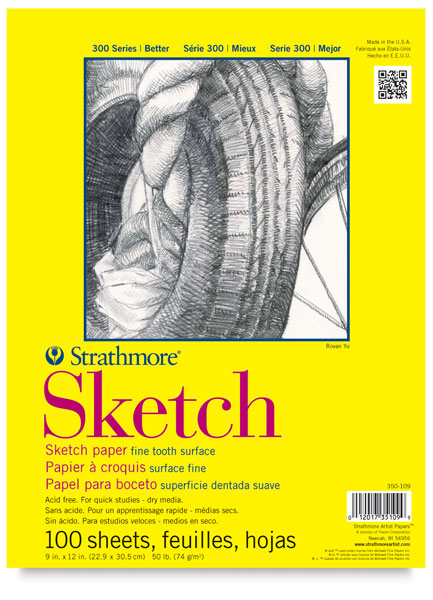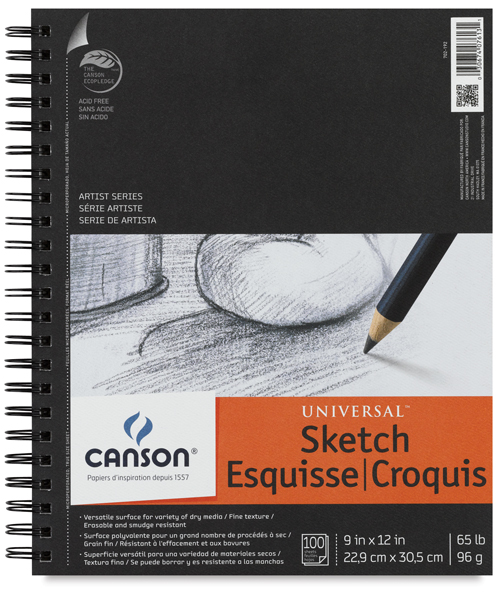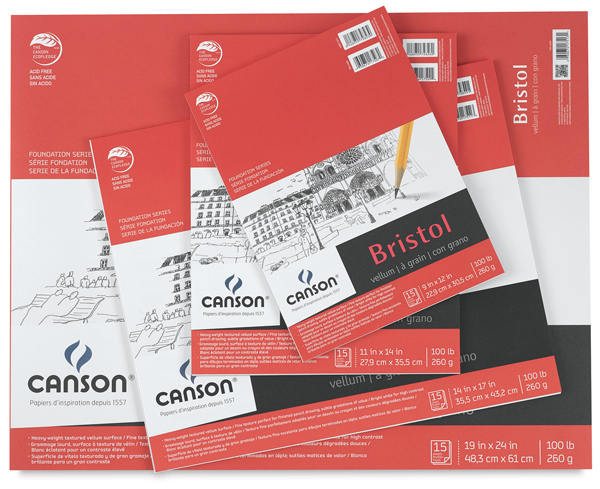When choosing drawing paper, there are a couple of things to consider:
First, look on the front cover of the drawing pad to find the weight (in pounds). This weight refers to the weight of 500 sheets of this paper before it’s been divided. The thicker the paper, the heavier the weight, and the better the quality of the paper. Paper that is too thin will tear easily when you try to erase a mark. Very inexpensive pads (from a discount store) sometimes won’t even mention the weight.
Sketch pads are available in all sizes and shapes –bound in book form, with spiral binding, or with pages that are easily taken out. The paper you purchase will depend upon how you plan to use it. If you’re going to be creating a nature journal, you’d probably want an actual sketch book that will last for many years. If it’s for general practice and you want to keep the drawings together, try a spiral-bound pad. I prefer these to the ones that are bound as a book; the spiral binding makes them much easier to lay flat. Depending on their size and weight, the cost of a drawing pad ranges anywhere from $2.00 to about $8.00.
A heavier, thicker paper that works great for pencil is called BRISTOL. This type of paper is recommended by artist Lee Hammond because it holds up well to a shading technique that involves rubbing the graphite. It comes with a “smooth” finish or “vellum” finish; both are fine for pencil, though I prefer the smooth finish. This paper comes in many different sizes. A good size to begin with is 9″ x 12″. This is a more awkward size for framing, though — I like to frame my children’s artwork, and it’s difficult to find inexpensive frames in these dimensions. I often cut these papers down to 8″ x 10″, saving the extra pieces for another project. A pad of 15 sheets (9″ x 12″) costs about $5.00.
What weight do you buy? That depends. If you are choosing drawing paper for a child who is probably going to go through a lot of paper practicing, go inexpensive (my children use up pages and pages of copy paper). If it’s for a particular drawing that you want to turn out great, buy the best you can afford. In my art classes for children, I provide them each with a piece of Bristol Board. That way, they have a better chance of leaving the class with something they’re proud of. When the supplies you use are quality supplies, you’ll see it in the final picture.




I’m an adult who would like very much to begin again having not drawn for many many years. Thus far I’ve found your website very comforting as I slowly make preparations towards setting myself up to make this a reality. I had drawn regularly in High School but for various reasons I abandoned my love of art but over the years have managed to express my interests in other forms. However now it is time to return to my love of drawing particularly in pencil and hopefully proceed from there. I felt i needed to share these comments with you as I navigate my way in the early stages of this process. Thank You for allowing me to correspond. Sincerely, Stephen.
Stephen, what you have wrote could have been me you were writing about! My later mother loved art and was talented. I too liked it even though not much good. I have just discovered how many types of pencils there are through an online friend and it has sparked my interest again to ‘have a go’. I have ordered some Tombow 100 pencils and like you, am starting slowly and at the beginning again. Hopefully I will eventually produce something I am happy with. If not, then I will just enjoy the experience of expression.